Each summer I like to go round the park near my house in Hanwell, West London (Elthorne park) and try to get photos of the flowers that are out, to see what the bees have to feed on. Elthorne park has a smart (e.g. boring) bit with a children’s playground, but behind that are some wilder fields, leading down to woodland and the canal. Bunnies bounce about and occasionally you can walk for as long as five minutes without spotting another human being. Here’s what I found yesterday.
Bluebells…
EDIT: Comments from London Beekeepers Association Forage officer Mark Patterson, via Facebook:
“the blue bells are probably Spanish blue bells Hycinthoides hispanica or hybrids of them. English blue bell H. nonscripta are smaller, scented and have a unique tone of blueness. I would say they are deffo not English blue bell H. non-scripta, because in non-scripta they all hang downwards on one side of the stem whereas H.hispanica and its hybrids have bells hanging at all angles from all around the flower stem as it would appear in your photo. There is a growing concern over H.hispanica and its hybrids taking over the UK and replacing our native bluebell. I have dug all mine up and bough in english bulbs from specialist nursery to replace them.”
There’s a good explanation of the differences between the English and Spanish bluebells in this post by a biologist: Bluebell time!
Whitebells…
And pinkbells! I assume these are just unusual variations of the usual blue colour? Ted Hooper describes bluebells in his Guide to Bees and Honey (2010): “The honeybee works this flower with varying eagerness but in some years with great vigour. It provides a yellow pollen.” I haven’t spotted a single bee on a bluebell this year, has anyone else?
I think these pretty baby blue flowers with yellow centres are forget-me-nots. (EDIT: yep, confirmed by theprospectofbees in coments below.
This is white dead-head nettle. I like the contrast of the white flowers arrayed amongst the vibrant green leaves.
Um, very tiny purple flowers?
(EDIT: theprospectofbees has suggested ground ivy in the comments below, and it certainly looks similar).
Blossom of some kind – anyone know which? I hear apple blossom is out. Ted Hooper says “All the tree fruits – apple, pear, cherry and hawthorn or may…”None, except cherry, is a good honey plant, but they provide some nectar and plenty of pollen and are therefore useful to the beekeeper. The flowering periods cover the end of March, April and May….The honey is pale straw to medium amber and of delicate flavour. Pollen loads greenish yellow to pale yellow” (Guide to Bees and Honey, 2010, p.225).
The under-appreciated dandelion, which looks like little yellow pom-poms to me. Recently I downloaded a helpful free online guide named ‘Twelve months of forage’ by Andy Willis from the Reading Beekeepers Association, included in their March 2013 newsletter (scroll right to the end of the newsletter for the forage chart). Andy describes dandelion pollen as leaving a orange dusting on the underside of foragers. He also says dandelion can be a possible honey crop when it’s sunny – during dull or bad weather the flowers will close.
Anyone have any ideas what this tall white flower is?
(EDIT: identified as garlic mustard by standingoutinmyfield, Garden Walk Garden Talk and theprospectofbees in comments below.)
Here it is close-up.
Some pink blossom… I’m clueless on this too.
(EDIT: H-Appicultrice has suggested that it looks similar to Bramley apple blossom.)
And this was the only flower I actually saw bees on. It’s a common weed round here, but I don’t know what it’s called. When in a sunny spot I often see it covered with all types of bees – bumbles, honey bees and carders. This looks like a common carder bee to me.
EDIT: with help from Eddy Winko in the comments below, I’ve identified this blue flower as ‘green alkanet’ (also known as evergreen bugloss). The www.first-nature.com website tells me that “The name alkanet comes from the arabic name for henna, and the roots of Green Alkanet can be used to produce a red dye.” Indeed, this BBC article about partying in the times of Jane Austen reveals that “For rosy cheeks, alkanet and cochineal roots were used as the basis for rouge.” This blusher was used mostly by women, but also by some male officers during fancy occasions such as balls!
And a post by wellywoman gives the information that it originated in the southern Mediterranean but was imported for this red dye and was popular in medieval times with monks; it is probably from the gardens of the monks that it spread into the British countryside. It’s a member of the Borage family, which would explain why it’s so popular with the bees.
I haven’t done very well on my flower id-ing during this trip. I’m hoping some people will leave comments here to help me! Also, I didn’t see many bees, despite it being a warm, sunny day. I spotted five during a 40 minute walk and heard another two buzz past. Wonder if the rainy spring has meant a lot of bumble bee queens weren’t able to get going.


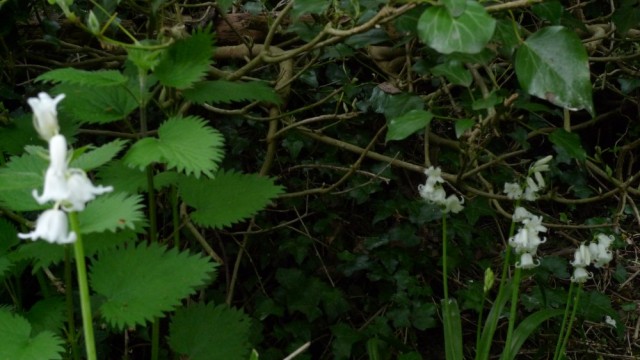
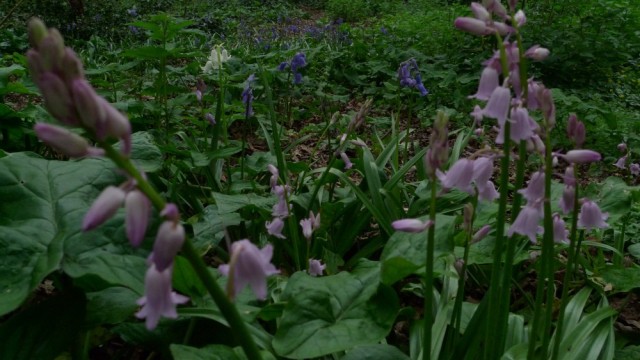

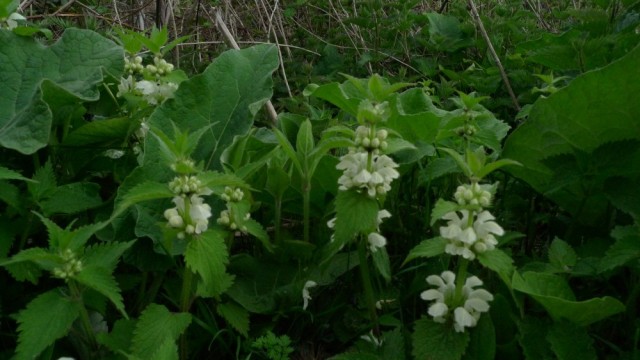
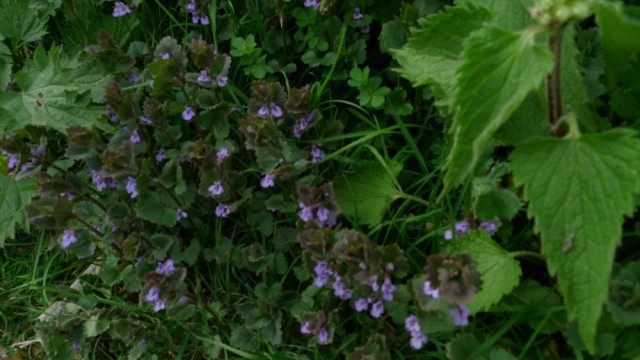
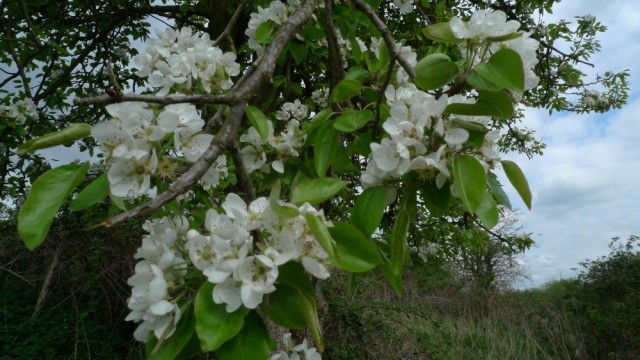
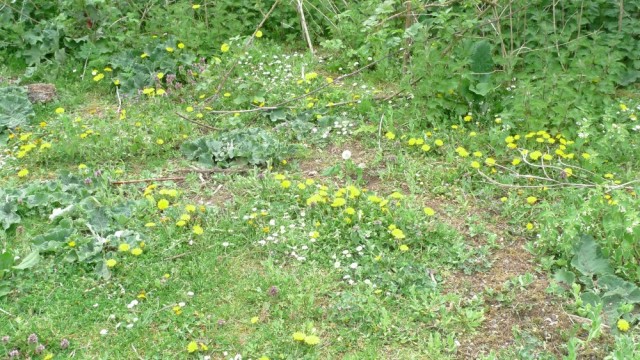
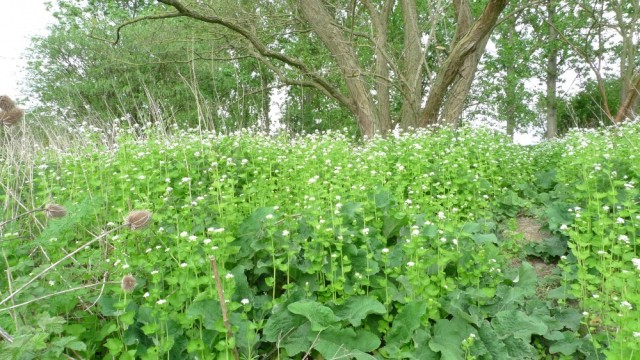
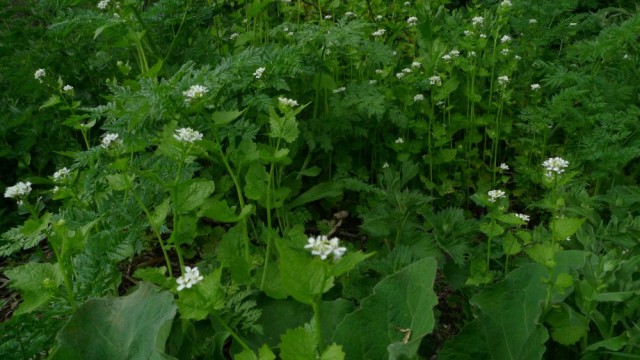
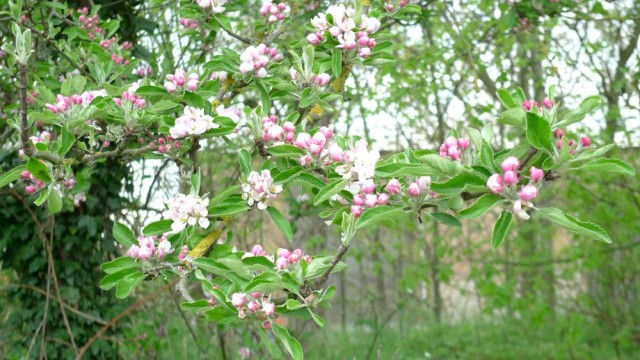
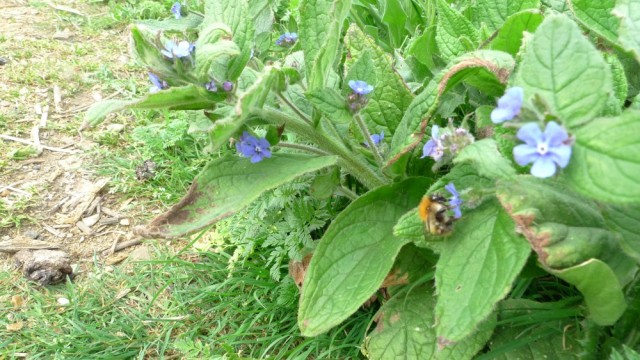
The pink blossom looks very similar to the blossom on my Bramley apple tree
LikeLike
Ah thanks – have updated the post with this info!
LikeLike
The tall white flower is the invasive (and edible) garlic mustard.
LikeLike
Brilliant, thanks 🙂 I’ve updated the post to say so.
LikeLike
Yes garlic mustard. And a pear tree.
LikeLike
That’s two for garlic mustard, great stuff.
LikeLike
We can confirm the forget-me-not and garlic mustard identifications. Might the very tiny purple flowers be ground ivy?
http://threatsummary.forestthreats.org/threats/threatSummaryViewer2.cfm?threatID=260
And we are so envious of the blue bells. We keep trying to grow them but they never multiply enough to make a carpet.
LikeLike
I read somewhere that it’s hard to get bluebells to grow outside of ancient woodland (woodland that’s been in place since the 1600’s). Thanks for the ground ivy idea – it does look very similar and it’s the right time of year for it.
LikeLike
That is discouraging. Those carpets of blue are so lovely. Fragrant as well?
LikeLike
Hmm, I don’t remember a fragrance, but perhaps there is a delicate one. I’ll have to stick my nose in some and find out!
LikeLike
Fantastic Emily to see spring has arrived for you guys.
Some part of New Zealand are having a late autumn mini flow, but where we live I haven’t seen that happening yet.
Looking forward to chatting you guys soon….Gary
LikeLike
Thanks Gary, doing the podcast will be great!
LikeLike
It looks like the table is quite set for your ladies! =]
LikeLike
Yes, a beautiful banquet to choose from!
LikeLike
Such great fun, looking at what you have in bloom.
LikeLike
Thanks for commenting Charlie, I’ve started following you on Twitter 🙂
LikeLike
The last one looks a lot like comfrey; makes fantastic liquid feed for tomatoes and other plants 🙂
LikeLike
Thanks Eddy. I looked at comfrey on a google image search and it didn’t look quite right, but then I saw an image of my plant on a forum post about misidentification of comfrey – http://www.growfruitandveg.co.uk/grapevine/vegging-out/comfrey-misidentification_56784.html. This helped me find out that this blue flower is green alkanet – so thank you!
LikeLike
Hi Emily… (1) pink- / purplebells are not uncommon variations. In fact, I’m looking at one amidst the blue right now (Chiswick) (2) I took the tiny purple ones to be violets / wood violets at first sight (3) I go for Bramley Apple blossom as well (4) Never heard of ‘Alkanet’, know it as bugloss. Former sounds like a device for preventing drunks falling off bar stools. RH
LikeLike
Ah, perhaps I’ve just not noticed many pinkbells before then! Violets is a good idea.
LikeLike
Loads and loads of forget-me-nots. I know they are good for bumble bees but not sure about honey bees.
LikeLike
oops you already mention them!
LikeLike
That’s good that bumbles like them! I wasn’t sure as I haven’t noticed bees on them before.
LikeLike
Wild garlic is also known as ‘Jack by the hedge’ – see http://www.bing.com/images/search?q=jack+by+the+hedge&qpvt=jack+by+the+hedge&FORM=IGRE
LikeLike
That’s a pretty name.
LikeLike
Sorry to be pedantic but “Jack by the Hedge” is Garlic Mustard. Wild Garlic is the plant also called Ramsons which carpets hedgerows and woods down here in Devon at present with its fleshy leaves and its starry white flowers.
LikeLike
Thanks Philip. I’ll try to see if I can spot wild garlic round here too. I don’t remember noticing it in London before.
LikeLike